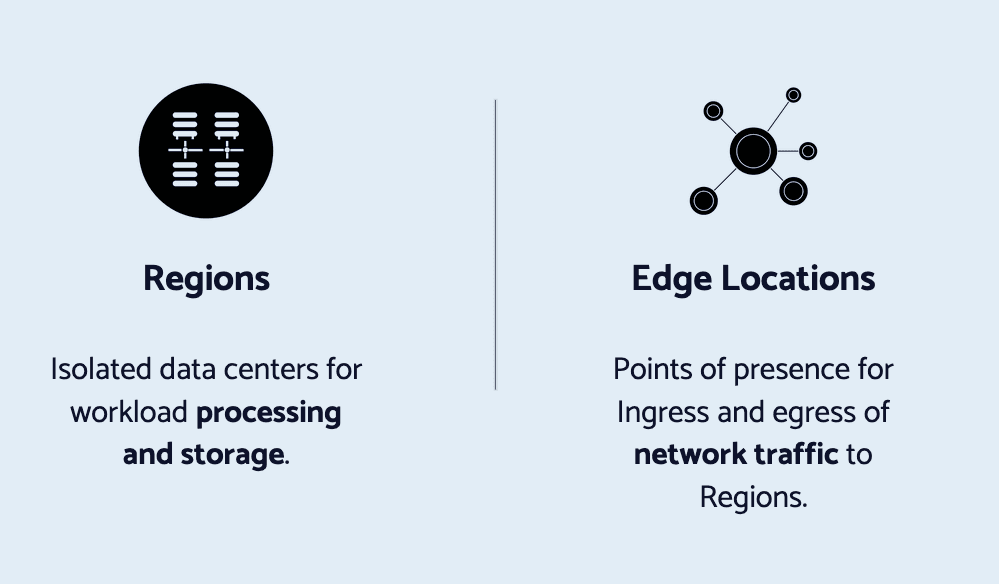Global Infrastructure
Twilio's Global Infrastructure allows you to control where your application's Twilio-related data is routed, processed, and stored.

You can ensure that your users have the best experience possible, regardless of location, by architecting your applications with our Global Infrastructure in mind.
Twilio Regions are the data centers where your application's Twilio data is processed and stored. Select a Region close to your application to optimize for application performance, or select a Region in the geographic area where you want your application's data to reside.
Select the Twilio Region nearest to your application servers to achieve the shortest possible round trips between your servers and Twilio's compute and storage infrastructure. Shorter round trips typically result in lower latency and improved quality and responsiveness for your application.
Minimizing round-trip distance and latency is especially critical in highly interactive applications such as real-time voice systems, video applications, or chat interfaces.
By opting to configure your application to use a specific Twilio Region, you can ensure that your application's Twilio data remains within the corresponding territory at all times. This level of data storage locality control can be critical for businesses that need to adhere to regulations that require customer data to remain within regional boundaries.
Warning
Note that during this initial phase of the rollout of Twilio Regions, Twilio does not guarantee that all data will remain within your selected Region.
Twilio currently operates the following Regions:
- United States (US1)
- Ireland (IE1)
- Australia (AU1)
Warning
Not all products and features are available in Regions outside of US1. For a full list of regional product and feature availability, refer to our Regional product and feature availability page.
Twilio's Edge Locations are the onramps and offramps to Twilio's high-speed internal network - the data ingress and egress (entry and exit) points located on the network edges that we operate in major cities throughout the world.
Your servers and SDK or SIP clients can minimize network latency for Twilio connections by connecting to the Edge Location nearest to them. Additionally, you can ensure resilience by having alternate Edge Locations to connect to in the case that one Edge Location becomes unavailable.
Note that regardless of which Twilio Region your application uses, its traffic to and from the Twilio Region will always transit via an Edge Location. Any Edge Location can be used in combination with any Region.
You can control which specific Edge Location your application servers or clients connect to in order to optimize the efficiency of your connection to Twilio. Additionally, some Twilio server-side SDKs provide an option to leverage Twilio's Global Low Latency mechanism to automatically select the most appropriate Edge Location based on DNS request latency measurements.
If the Edge Location that your application or clients are using becomes unavailable due to natural disaster, equipment failure, or any other reason, you can configure it to connect to an alternate Edge Location.
To learn more about architecting your Twilio Voice powered application for maximum resiliency, see our guide to Best Practices for Voice Failover.
- Learn more about Twilio Regions
- Learn more about Edge locations